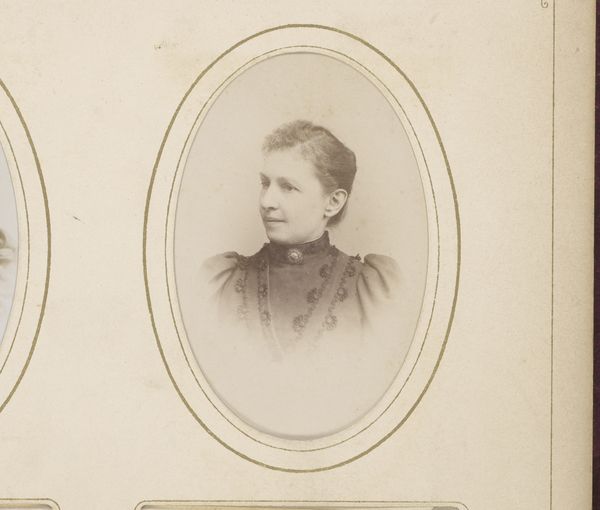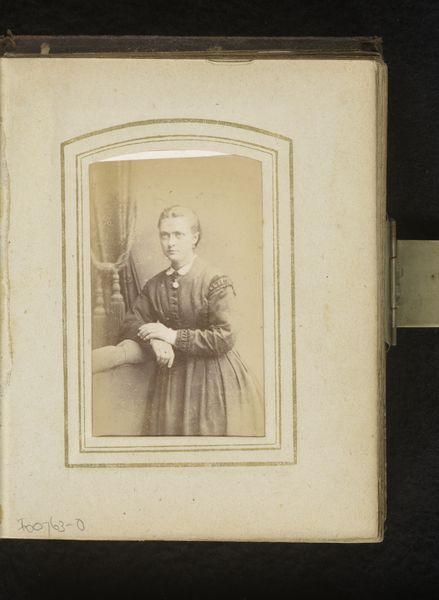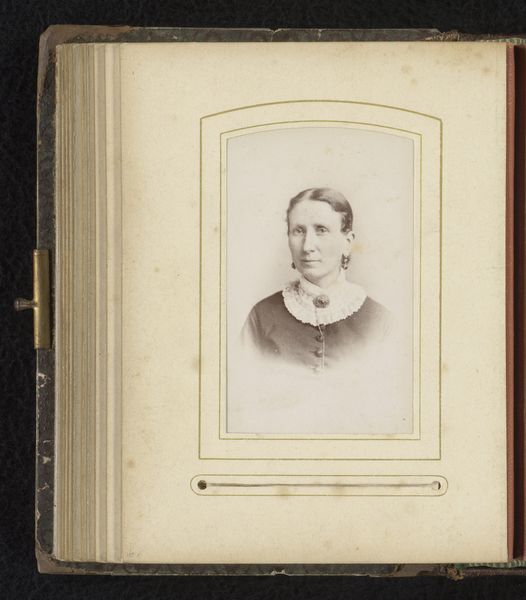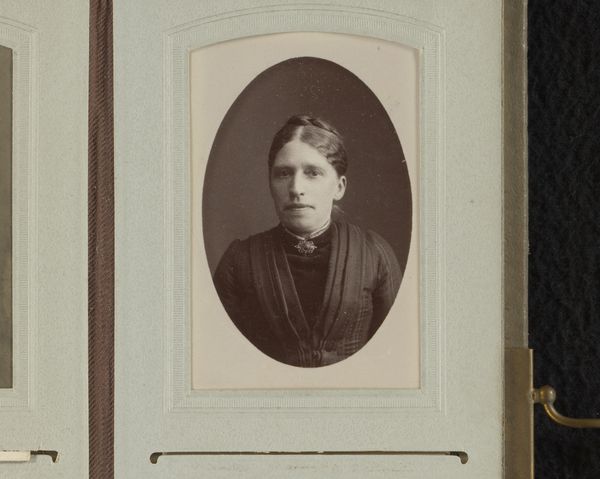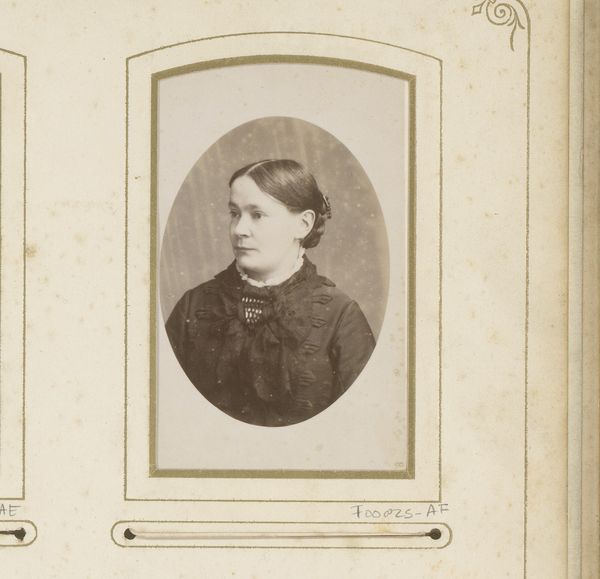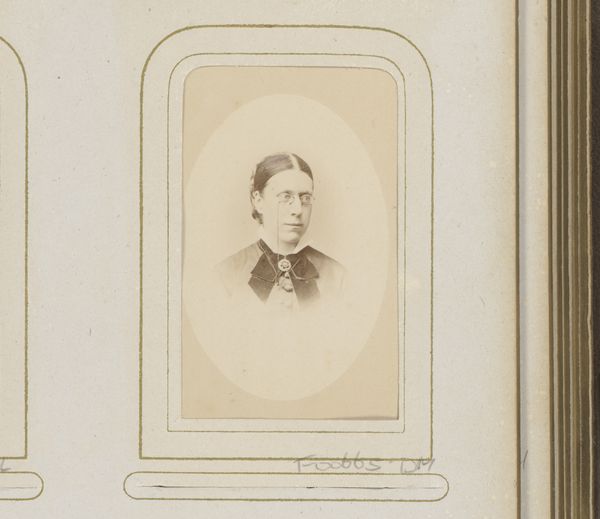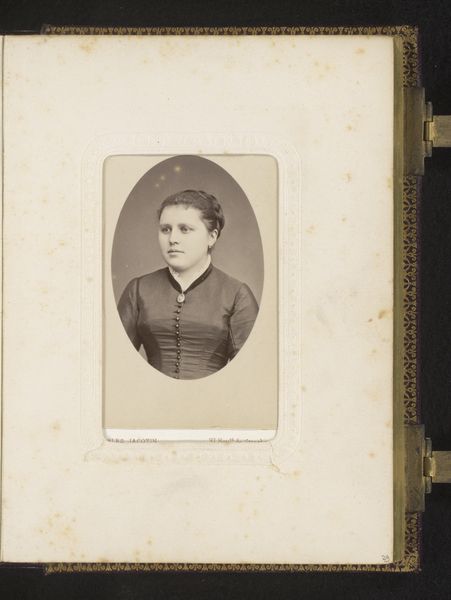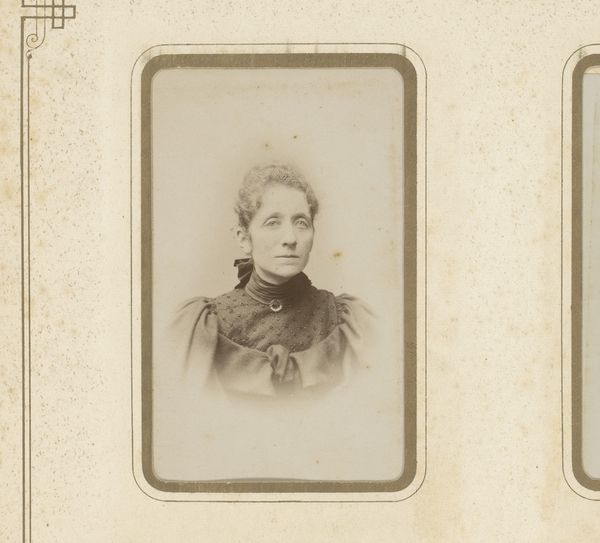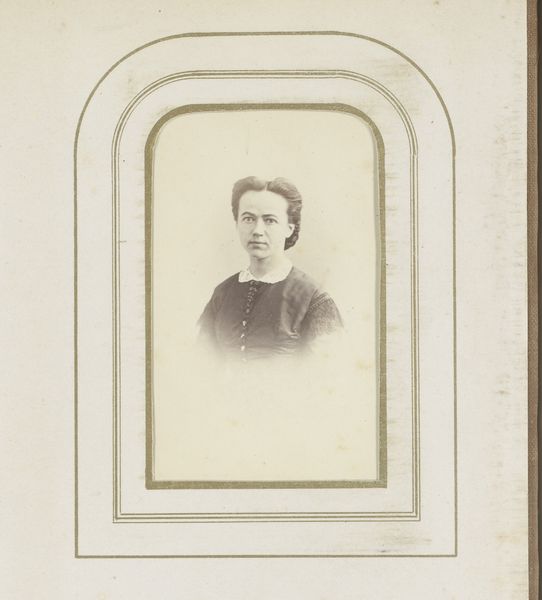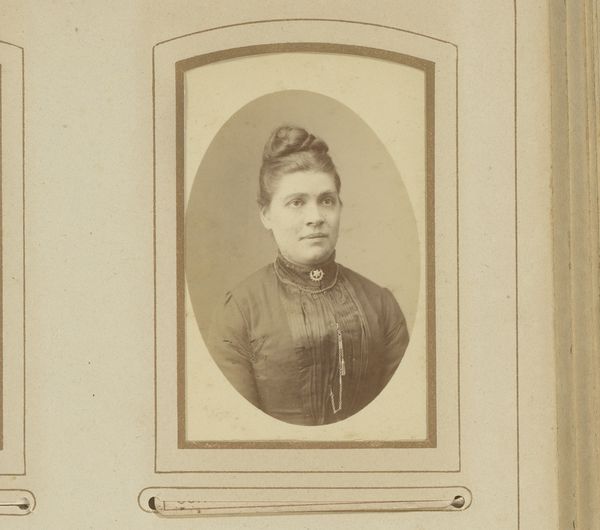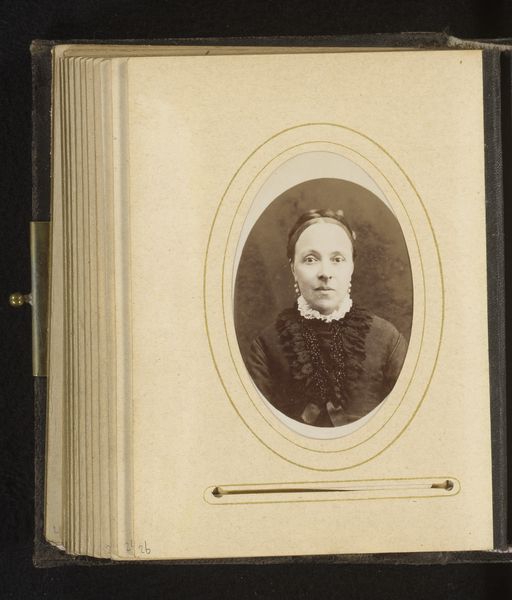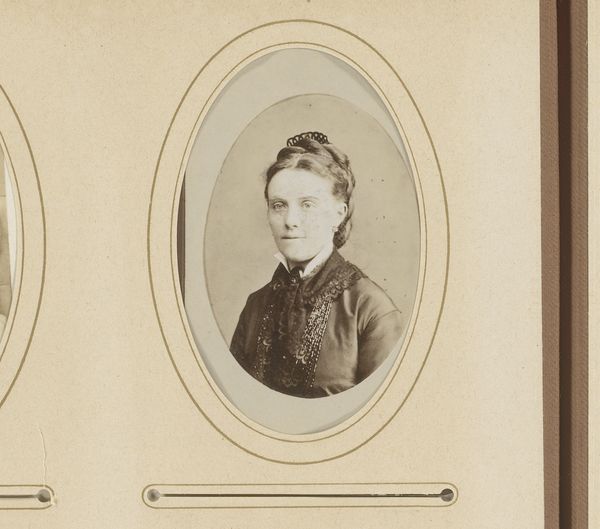
Dimensions: height 136 mm, width 95 mm
Copyright: Rijks Museum: Open Domain
Editor: This portrait of a woman, taken sometime between 1860 and 1890 by the Taeschler brothers, is really striking. The soft focus gives it an almost dreamlike quality. How do you interpret the image? Curator: The photograph is more than just a record; it's a deliberate construction of identity. The subject's gaze, coupled with the intricate detail of her attire, presents a woman conscious of her place and power. Consider the period—photography was becoming more accessible, yet a portrait remained a statement. What message do you think she’s trying to convey through her posture and clothing? Editor: I suppose that it's about conveying respectability and refinement, given the lace and the carefully styled hair. But the muted tones also give it a sense of melancholy, don't you think? Curator: Indeed. That melancholy might reflect the Victorian era’s complex relationship with mortality and memory, or even a personal experience we can only speculate about. Look at how the light softens her features, almost like a halo. Could this be an attempt to immortalize her, to elevate her to an idealized form? Editor: So, you see a connection to earlier portraiture traditions? The idea of the sitter as an icon almost... Curator: Precisely. This is not just a photograph, but a constructed image intended to resonate with cultural ideals of beauty, status, and memory. It prompts us to consider who is remembered, and how they choose to be remembered. Editor: That’s fascinating. I hadn't considered the layers of meaning embedded within what seems like a simple portrait. Curator: Images speak volumes, don't they?
Comments
No comments
Be the first to comment and join the conversation on the ultimate creative platform.
